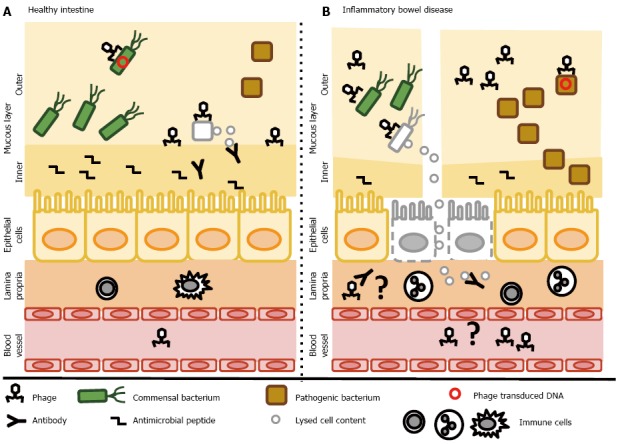Figure 2.

Putative contribution of bacteriophages to regulation of the intestinal bacteria - a simplified scheme. A: In the healthy gut, bacteriophages might increase the fitness of commensal bacteria by the delivery of genes with environmental benefit or contribute to reduction of the pathogenic bacteria. Moreover, phages directly interact with the glycoproteins of the mucous layer and provide protection against invading bacteria. In some healthy individuals, phages have been detected in the circulation, suggesting the possibility that they cross the intestinal epithelial barrier; B: In inflammatory bowel disease, more phages are found in the mucous layer. Higher numbers of phages may be involved in reducing the amount of commensal bacteria, and may drive the transfer of genes with environmental benefit to pathogenic bacteria. Due to the reduced mucosal layer, phage interactions with mucosal glycoproteins may be reduced. Moreover, disruptions in the epithelial barrier might lead to the migration of many phage particles into the lamina propria or even the circulation. In the lamina propria, phages may serve as a local trigger of the immune response. After translocation to the systemic circulation, a systemic immune response might occur.
